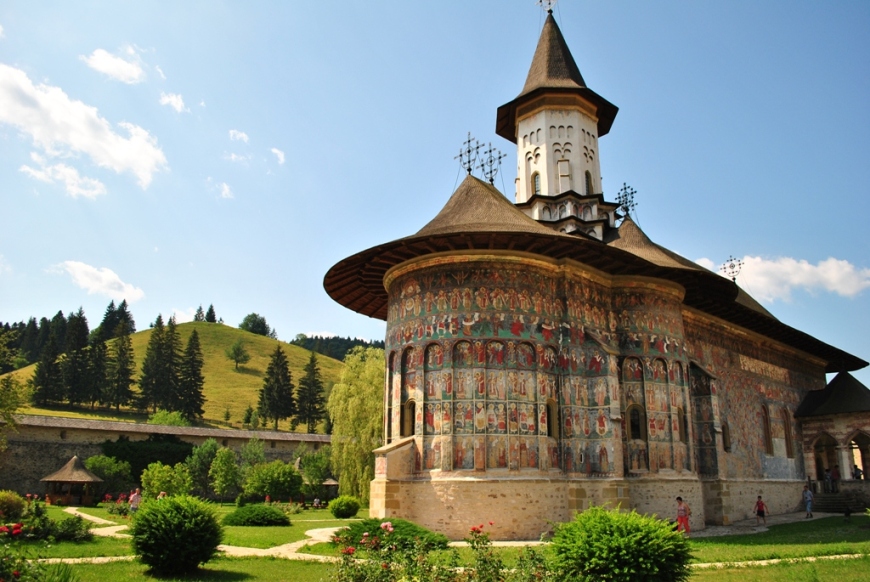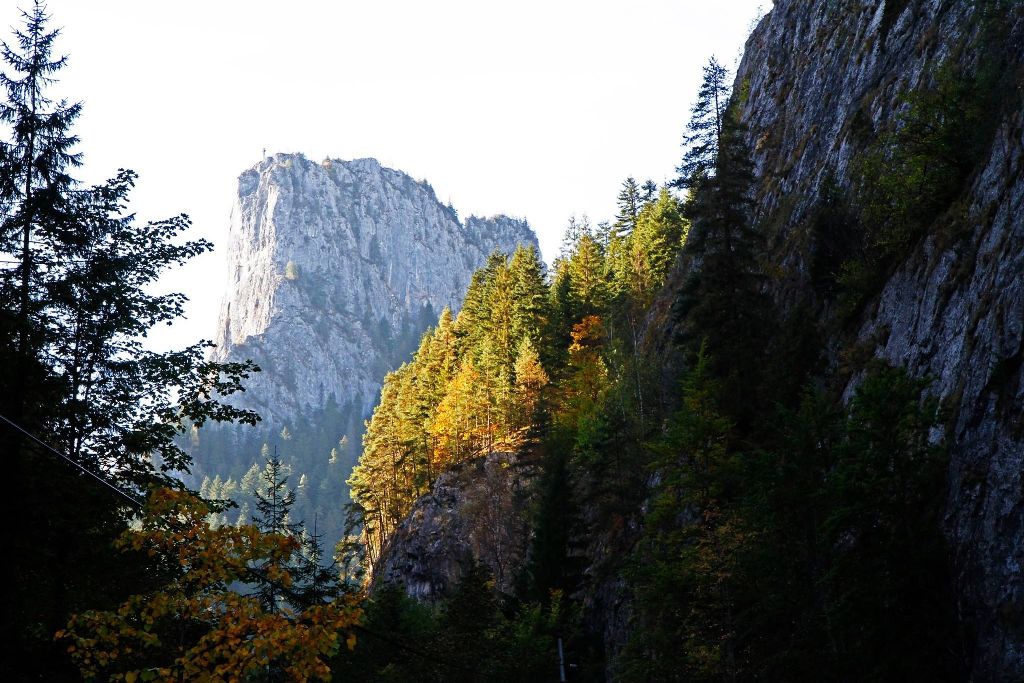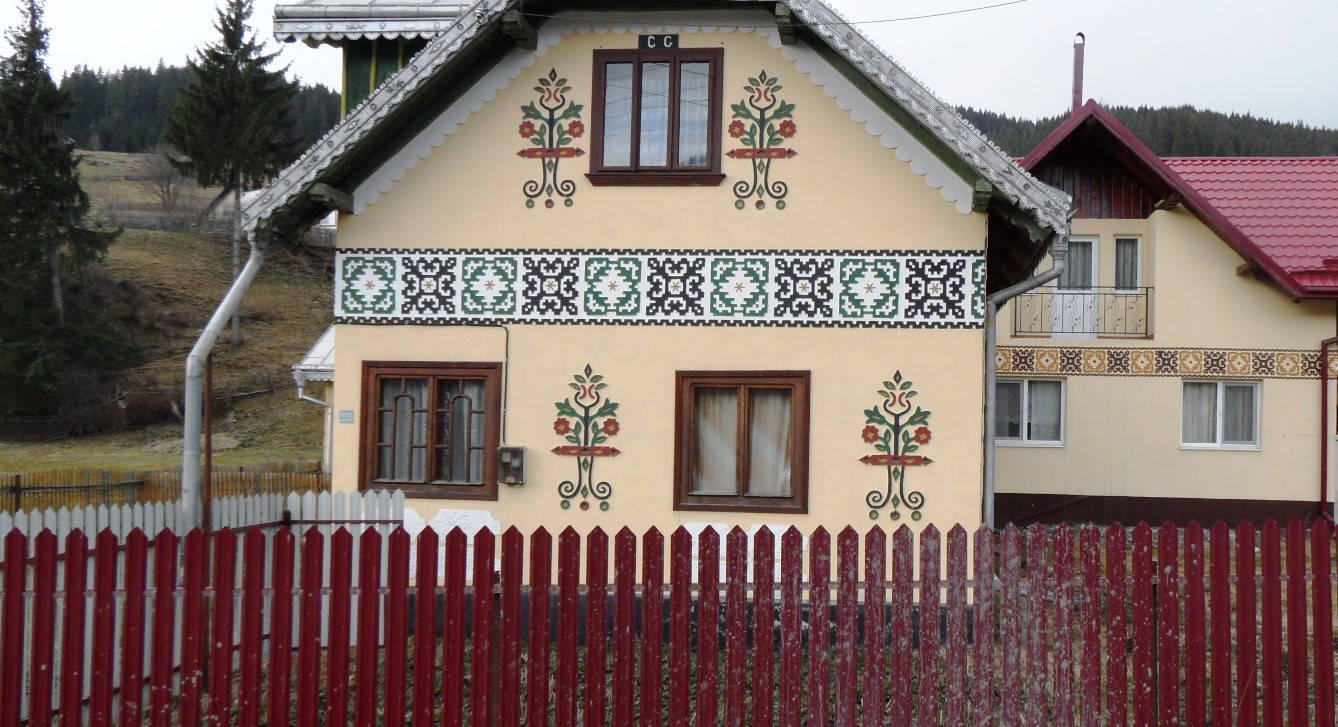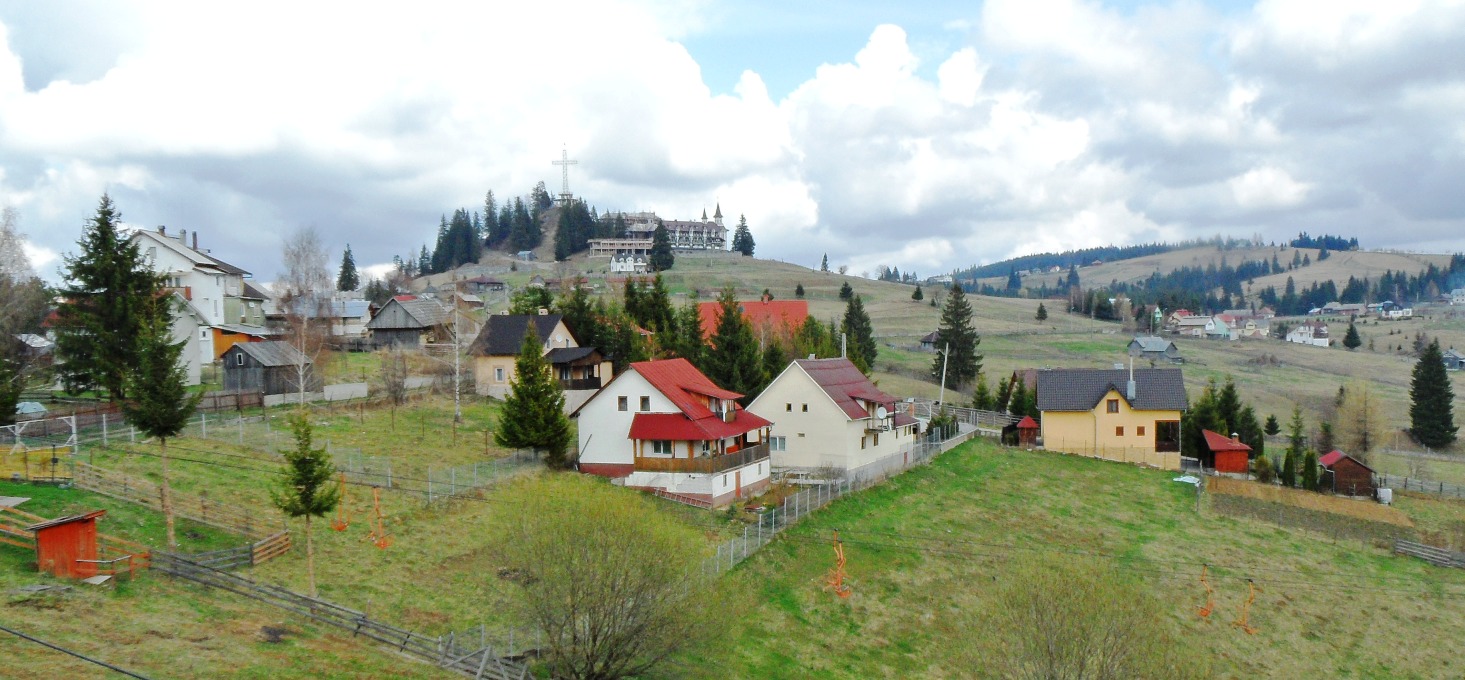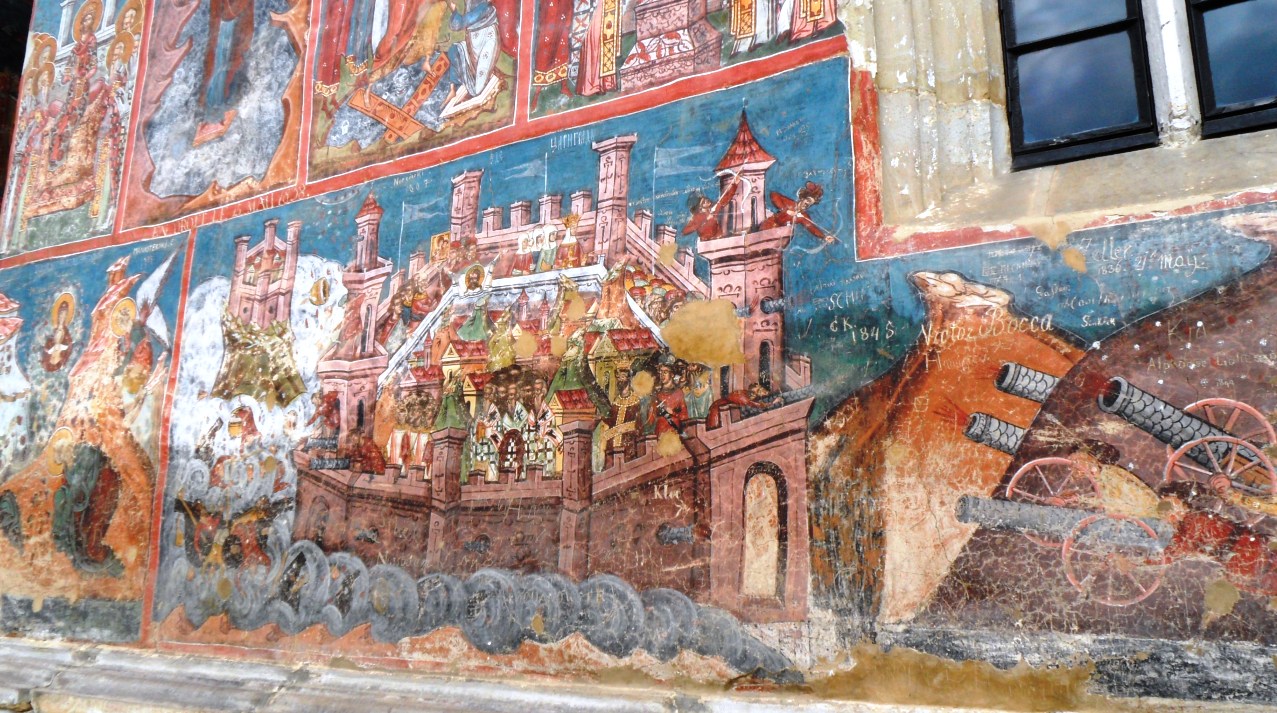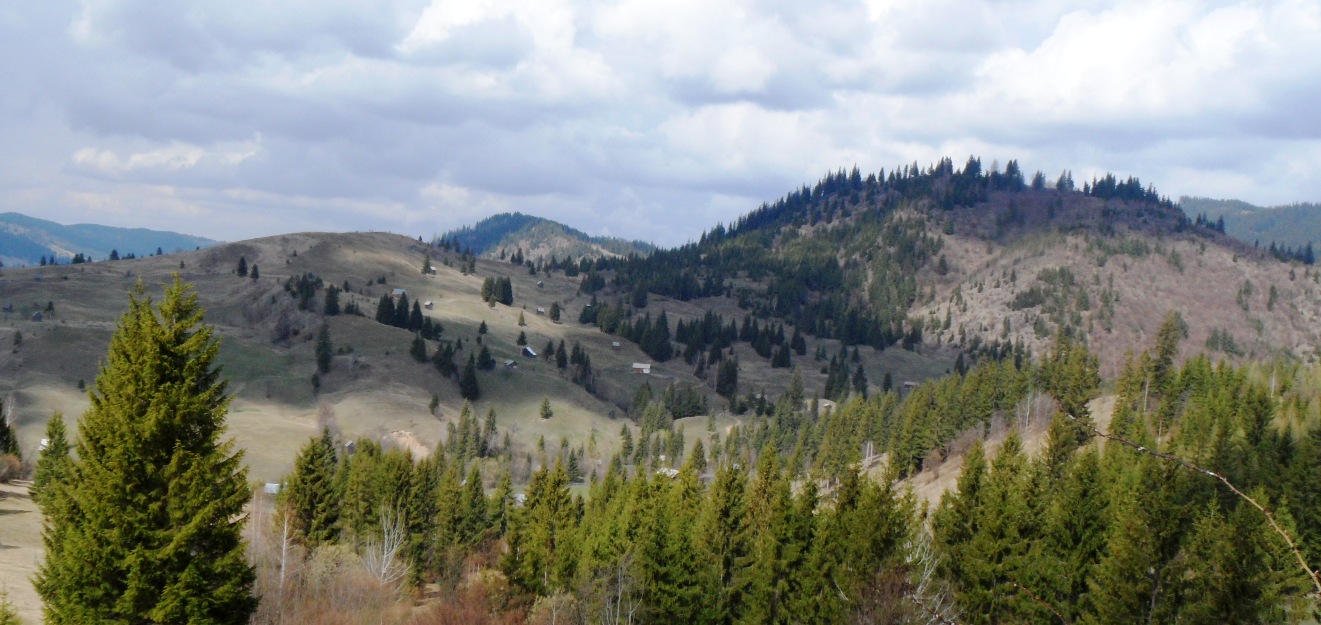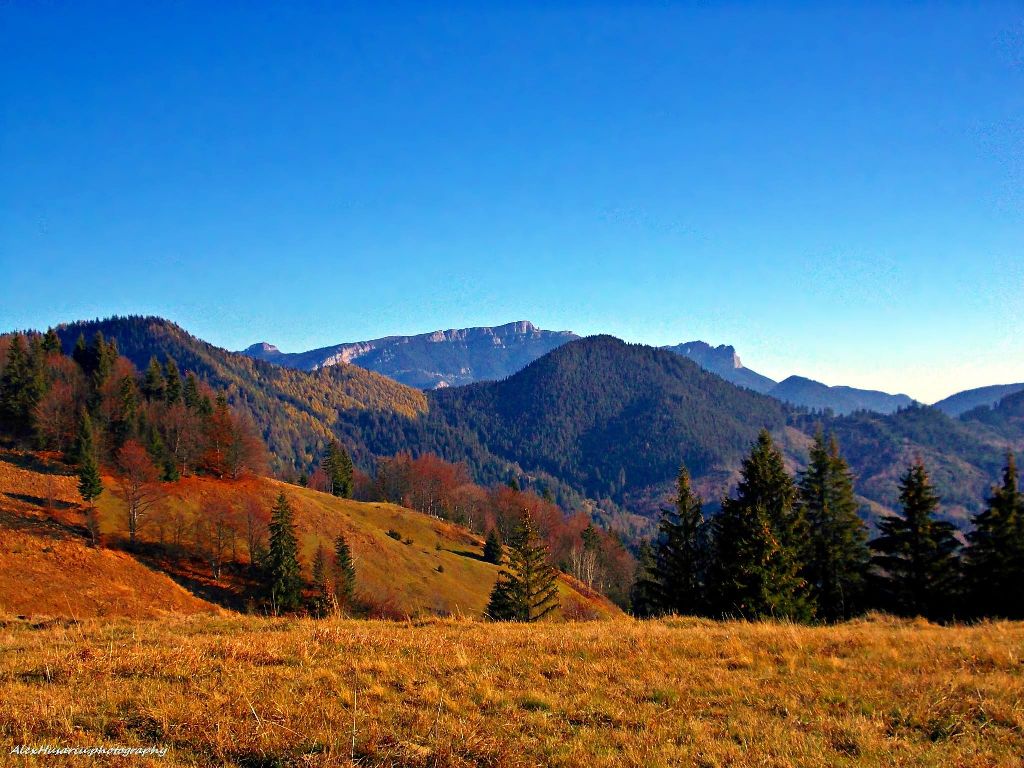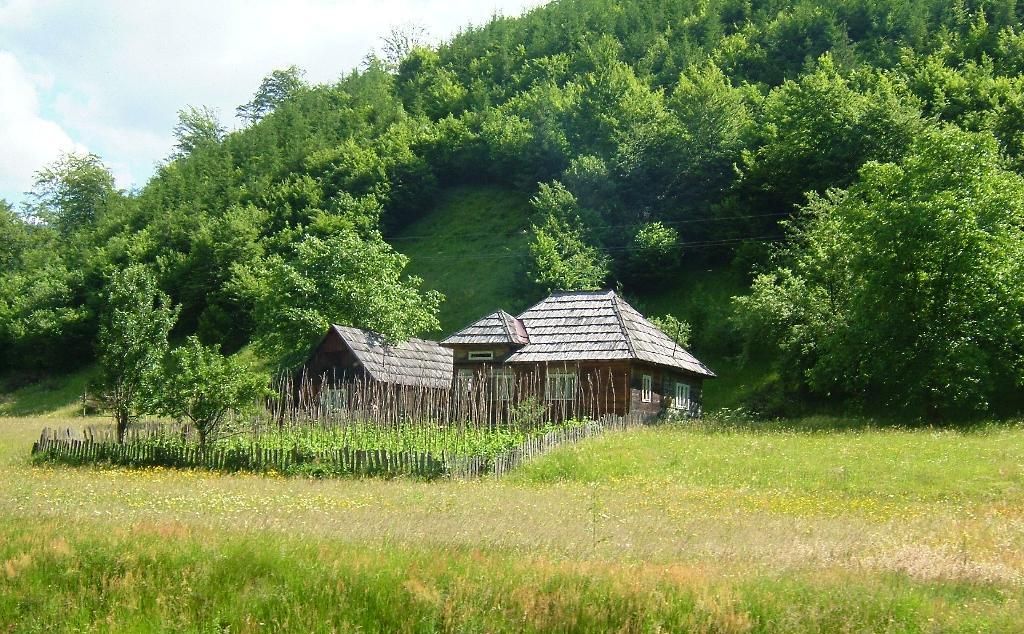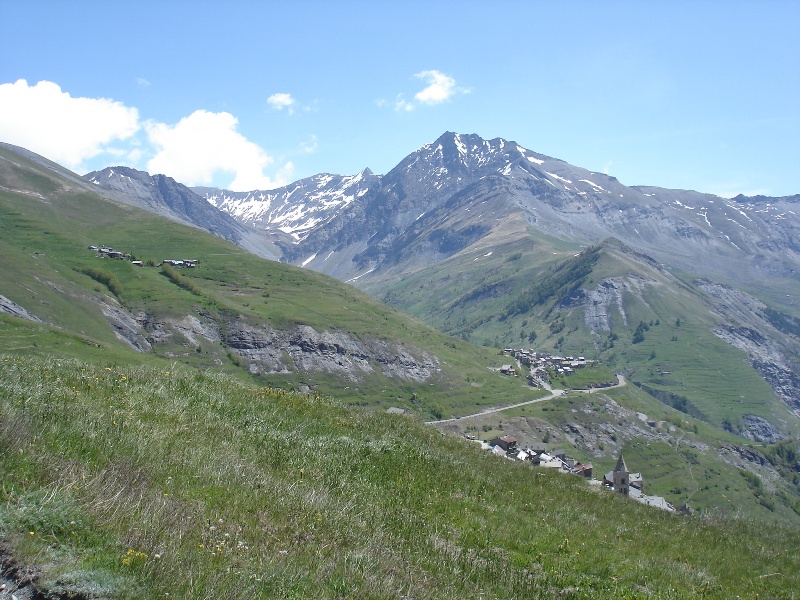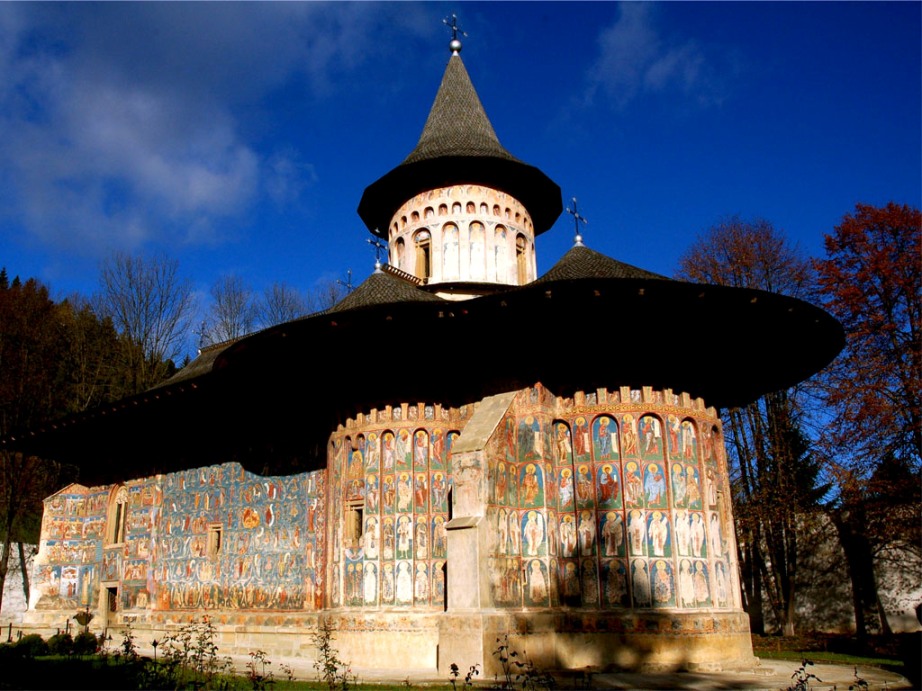Moldavia
You are here: Home > Destinations > Romania > Moldavia
About Moldavia
Moldavia rivals Transylvania when it comes to rich folklore, natural beauty and astonishing history. The Capital, Iasi, boasts an impressive number of Orthodox churches, almost 100, most of them located in the Golden Plateau, representing the nucleus of the city. One of the most famous monuments in the city is the stunning Church of the Three Hierarchs, built in 1639. Another major landmark is the neo-gothic Palace of Culture, built between 1900-1926, currently housing the Ethnographic Museum, the Art Museum and the History Museum of Moldova.
Nestled in the rolling hills to the north of Moldavia is the region of Bucovina, home to one of the world’s greatest art treasures: the UNESCO World Heritage Sites of the Painted Monasteries of Bucovina. Built in the 15th and 16th centuries and featuring colourful exterior frescoes depicting dramatic religious scenes, these richly decorated houses of worships are unique in the world. The most famous of these, often called “the Sistine Chapel of the East”, is Voronet Monastery. Erected in 1438 by Stefan the Great, Voronet’s most stunning feature is a Last Judgment fresco painted – as at all these churches – on the exterior façade. The blue paint that has miraculously never faded is known throughout the world as ‘Voronet blue’. The artists here worked in isolation, guarding their trade secrets and to this day, the composition of the paint remains a mystery. Other painted churches not to be missed include Sucevita, with its distinctive greens, and Humor, where the frescoes are predominantly red.
The town of Suceava may be the best starting point for a trip to the monasteries. Once the capital of Moldavia (from 1375 until 1565), it has some noteworthy attractions of its own, such as the remains of the Fortress of Suceava built in 1388. Today visitors can tour the remains of the impressive fortifications and take in a great view of the city. Other sights in Suceava include the St. George Church (UNESCO World Heritage Site), Mirauti Church, the Zamca Monastery and a number of museums dedicated to woodcraft, ethnography, history and folk art. The Bucovina History Museum displays mediaeval armour, coins, tools and ancient documents. Its Throne Hall is a re-creation of Stephen the Great’s court with furniture, weapons and costumes.
A visit to Bucovina would not be complete without some stunning nature walks through Ceahlau National Park, Romania’s Olympus – the sacred mountain of the Dacians, the forefathers of the Romanian people. Make sure you bring binoculars as some 90 species of birds can be seen in the park area. Walkers won’t want to pass up hiking in the Bicaz Gorge, a steep, twisting-and-turning climb more than three miles long
Sightseeing Highlights:
- Iasi - beautiful old Moldavian capital with fabulous religious architecture and vibrant cultural scene.
- Hiking in the spectacular and remote Ceahlau massif, both in and above the forest line.
- Bucovina Painted Monasteries - quintessential Moldavian experience, plan to see a variety & sample the local produce.
- Nicolae Popa Museum - excellent collection of folk sculpture and other interesting items in the village of Tarpestri.
Festivals & Events:
- The Regional Festival of Folk Music and Dance (April) - Radauti
- Ceahlau Folk Music Festival (Second Sunday in August) - Durau
- Harvest Celebration at the Cotnari winery (September) - Iasi
- Trandafir de la Moldova Folk Music Festival (October) - Iasi
National Parks:
- Calimani National Park - volcanic plateau dominated by the Calimani caldera
- Vanatori Neamt Nature Park – home of the Dragos Voda bison & Carpathian wildlife reserve
- Hasmas-Cheile Bicazului National Park – spectacular gorges & the Red Lake natural reservoir
- Ceahlau Natural Park – explore many well-marked hiking trails: including Fantanele Chalet to Duruitoarea Waterfall.
- Bicaz Gorge
Food & Wine
Bean soup, stewed sauerkraut, parjoale (the local version of meatballs) or iahnie (a dish made of beans), are some of Moldavians’ favourite dishes. Standing out among the soups and broths is ciorba de potroace, made with chicken entrails boiled with carrots, onions, parsley, a spoonful or two of rice and flavoured with bors (a unique Romanian seasoning/stock). The Moldavian sarmale (meat rolls in sauerkraut leaves) are not only very popular in Romania but are also a famous dish served in Romanian restaurants around the world. These meatballs, rolled in cabbage or vine leaves, are made from minced pork mixed with rice, salt, pepper, chopped dill and parsley as well as chopped onion; small portions of this mixture are then rolled in cabbage or vine leaves and boiled. The sarmale are always accompanied by polenta, a finely ground yellow cornmeal. Local desserts include papanasi – cottage cheese dumplings (boiled or fried) and Poale in Brau (sweet cheese pie); Poale-n brau - small pies made from dough, eggs and cheese and fried in oil; Pasca - a sweet cheesecake.
Vineyards:
For centuries Moldova has been renowned for its vineyards and wines. One third of the wine growing surface of Romania is to be found in this part of the country.
- Cotnari Vineyard - located in the small village of Cotnari, famous for their delicious sweet white wines made of grapes rich in sugar and harvested in late autumn following the first frost.
- Tamaioasa Romaneasca - a naturally sweet or semi-sweet white wine with subtle honey and basil aromas, an exquisite amber colour and a rich lasting taste.
- Odobesti Vineyard - one of largest and oldest in Romania. There are written references to the Odobesti wine growing region dating from the 17th century. The vineyard features the Beciul Domnesc (Princely) Cellar, erected here in 1839, with a collection of more 100,000 bottles of old wines.
- Bucium Winery - the Bucium and Copou vineyards are set in the hills surrounding the city of Iasi. It includes an interesting wine-growing and production museum and a wine tasting room, as well as the restaurant Perla Viilor which serves rustic cuisine.
- Panciu Royal Cellars - a visit to this vineyard also includes a walk among the vineyards to the famous Panciu Royal Cellars, dating from the time of Stephan the Great, where numerous bottles of champagne perfect their taste.
We look forward to being of service.
Hotels to visit
Where to stay
Flexible Tailor-Made Holidays
- We believe passionately that no two holidays should be the same.
- With our flexible tailor-made holiday options you can travel at your own pace.
- Rediscover a city, a resort or an island in a weekend or longer.
- Take a small group tour or embark upon a more adventurous trip.
Trusted Service
- ATOL cover for flight inclusive holidays.
- One of us at Rediscover the World is very likely to have visited the hotels and travelled along the routes on your itinerary.
- Dynamic, comprehensive travel app with all your documents, maps and much more.
- Full financial protection for your holiday (TTA).
Why book Romania with us ?
- More than 30 years experience in Romania
- Unrivalled expertise of our local partner
- Fly-drives & Private Journeys
- Hiking in the Carpathian Mountains
- Small group cultural & nature tours
- Activity holidays / Food-themed breaks
- Personally chosen guest houses & small hotels
- 24hr assistance whilst in Romania
Reviews
